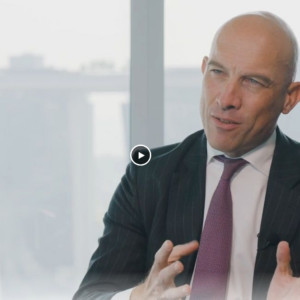Alternative investments braced for ‘democratisation’

While wealth and asset managers have posted falling assets, alternative investments continue to grow, with the breaking down of regulatory barriers expected to fuel further activity.
The global macroeconomic volatility and capital markets turmoil which defined 2022 was a trend that continued into 2023.To bring inflation under control, the Federal Reserve, the European Central Bank and the Bank of England continued to tighten monetary policy, firmly putting an end to a decade of near-zero interest rates.
Unsurprisingly, the global asset and wealth management industry has not been spared from the headwinds. As per PwC’s ‘Asset and wealth management revolution 2023: The new context’ report, global assets under management (AuM) dropped from a high of $127.5tn at end-2021 to $115.2tn at end-2022. While a technical recession might be avoided in advanced economies, the International Monetary Fund predicts global growth will remain sluggish in coming months.
Despite this, global AuM in alternative investments has continued its uninterrupted growth, reaching $18.0tn at the end of 2022, up from $12.8tn at end-2018. In a base-case scenario, the figure is projected to reach $23.7tn by 2027, growing at a compound annual growth rate (CAGR) of 5.6 per cent.
So what is driving this continued interest in alternatives and causing investors to shift from public markets to risker, but higher yielding, private markets?
Search for higher returns
Following the global financial crisis (GFC) of 2007-2008, central banks substantially lowered interest rates to stimulate economic recovery, which drove investors looking for higher returns away from traditional investments and towards alternatives.
Alternatives also provided diversification opportunities and reduced exposure to the volatility in public markets
Asset managers specialising in alternatives courted the world’s largest institutional investors and high net worth individuals (HNWIs), while many start-ups opted to forego IPOs and retain private ownership due to the ample availability of venture capital – a much-needed source of financing, as banks’ risk appetites fell considerably during the crisis. Alternatives also provided diversification opportunities and reduced exposure to the volatility in public markets.
A more recent factor behind private markets’ continued growth is the reduction of traditional barriers. While alternative investments have traditionally meant higher fees for investors, a 2023 survey by the Financial Planning Association noted that competitiveness and scalability of alternative products have reduced costs.
Regulatory overhaul
Revised regulations also translate into increased investor access to private markets. For instance, in 2020, the US Securities and Exchange Commission revised its definition of an ‘accredited investor’, prioritising investor knowledge over wealth. The EU has gone a step further, significantly revising the European Long-term Investment Fund (Eltif) regulation to open up private markets to retail investors.
The new framework (‘Eltif 2.0’) is expected to spur significant growth in the European private markets as asset managers seek to gain first-mover advantage among a so-far untapped mass market of retail investors.
The regulatory overhaul and opening up of private markets means some people are heralding the ‘democratisation’ of alternatives. However, as the aforementioned PwC report highlights, “this isn’t democratisation quite yet, as the main customer base will be HNWIs with at least $1m in investable assets”.
Additional barriers stand in the way of alternatives democratisation in Europe, with an ongoing debate regarding how often investors will be able to redeem their Eltif investments. In a consultation paper published in May 2023, the European Securities and Markets Authority (Esma) proposed a maximum, quarterly redemption frequency unless the Eltif manager “is able to justify that it could be higher, taking into account the individual specificities'' while, in contrast, some industry associations have argued for daily redemptions .
Rising allocations
The extent to which institutional investors will increase their alternative investments, as well as the exact criteria they will use is, as yet, unclear. Given the cautious macroeconomic outlook, private markets – despite their resilience – are feeling some of the heat, and investors can be expected to prioritise assets that provide more reliable streams of income.
This year’s BlackRock Alternatives Global Private Markets Survey highlighted that a majority of institutional investors plan to up their private markets allocations in all asset classes – with private equity being the most popular.
A whopping 82 per cent of institutional respondents cited income generation as their primary motive for their increased allocations in private markets, while 43 per cent cited “better ESG demonstration” as a reason for moving to private markets. With the energy transition and the EU and US ‘Green Deals’ picking up steam, alternatives – and particularly the infrastructure asset class – stand to benefit a lot from this conjuncture.
Moreover, pension funds and policy-makers in advanced economies are examining whether investing in high-yield local private firms – the ones courted by other investors as well – could create the financial returns needed to remain viable in the long-term, better withstanding national economic fluctuations. With geopolitical and environmental concerns defining the current global landscape, it will be interesting to observe the extent to which they will shape institutional investors and policymakers’ choices in the alternatives space.
Considering the tense macroeconomic and geopolitical environment private markets are fostering opportunity. Growing ESG demands lower costs, institutional investors’ growing interest, and regulatory democratisation have put alternatives securely under the spotlight. While the extent of ‘democratisation’ remains to be seen, it is reasonable to expect continued growth in alternatives in the coming years.

René Paulussen is alternatives leader at PwC Luxembourg





